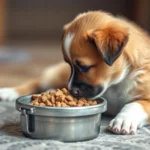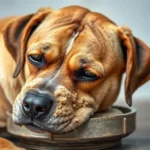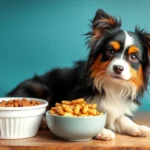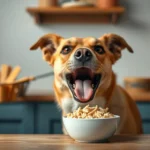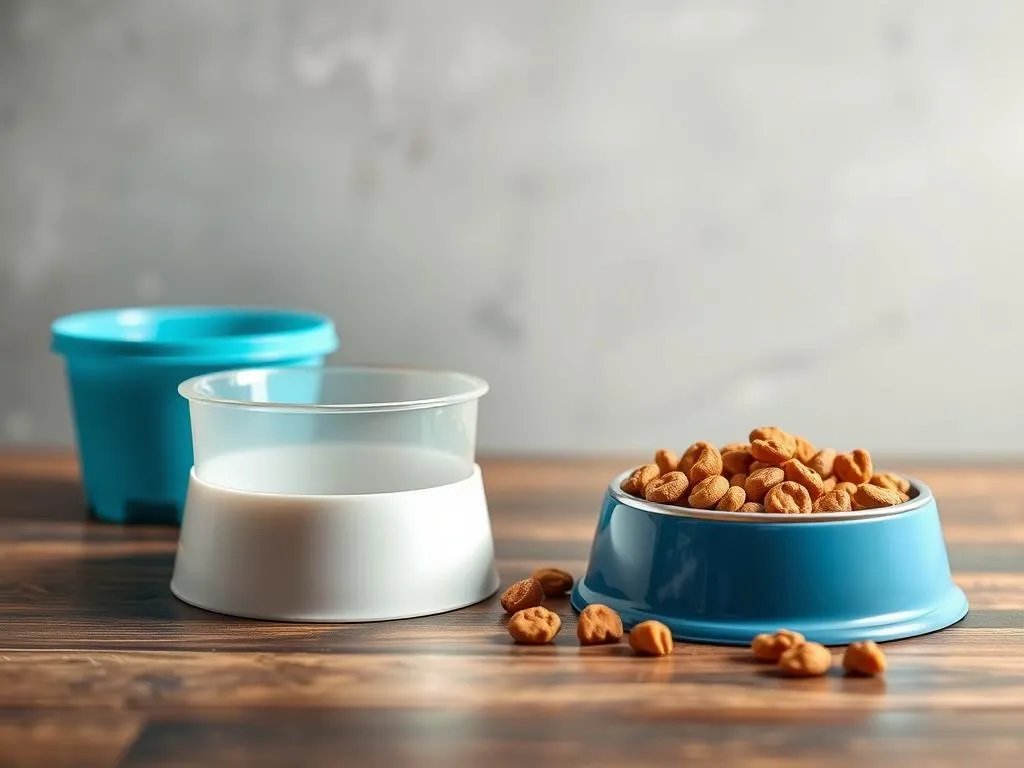
Introduction
Dog nutrition encompasses the dietary needs of dogs that contribute to their overall health and well-being. Proper nutrition is crucial for maintaining a healthy weight, supporting immune function, and ensuring optimal growth and development in puppies. While most pet owners focus on the quality of dog food, the type of container used for feeding can also have a significant impact on canine health.
In this blog post, we will explore the question: Are plastic bowls containers bad for dog food? Understanding the implications of using various types of food containers, particularly plastic bowls, is essential for every dog owner who wants to ensure their furry friend receives the best possible nutrition.
Understanding Dog Nutrition
Nutritional Requirements for Dogs
Dogs, like humans, require a balanced diet that includes various nutrients to thrive. The primary components of dog nutrition can be categorized into macronutrients and micronutrients.
- Macronutrients: These are the nutrients that provide energy and are needed in larger amounts:
- Proteins: Essential for growth, maintenance, and repair of tissues. Good sources include meat, fish, and legumes.
- Fats: Necessary for energy and the absorption of certain vitamins. Healthy fats come from sources like fish oil and flaxseed.
-
Carbohydrates: Provide a readily available energy source. Whole grains and vegetables are excellent carbohydrate sources.
-
Micronutrients: These include vitamins and minerals that support various bodily functions. Key vitamins include A, D, E, and B vitamins, while essential minerals include calcium, phosphorus, and potassium.
-
Water: Often overlooked, water is vital for hydration, digestion, and overall health. Ensure your dog has access to fresh, clean water at all times.
Types of Dog Food
When it comes to feeding our canine companions, there are several options available:
- Commercial Dog Food: This includes dry (kibble), wet (canned), and raw diets. Each type has its advantages and disadvantages:
- Dry Food: Convenient and shelf-stable, it can help maintain dental health due to its abrasive texture.
- Wet Food: Tasty and hydrating, it often contains higher protein levels but can be more expensive.
-
Raw Diets: Advocates argue that this mimics a dog’s natural diet, but it requires careful handling to avoid bacterial contamination.
-
Home-Cooked Meals: Preparing food at home allows for complete control over ingredients, but it can be time-consuming and may require careful planning to ensure nutritional balance. Consulting a veterinarian is essential to formulate a balanced diet.
The Role of Food Containers in Dog Nutrition
Importance of Food Storage
The storage of dog food is crucial for maintaining its freshness and safety. Grains, proteins, and fats can degrade over time, losing their nutritional value and potentially leading to spoilage. How you store dog food can influence its quality and, consequently, your dog’s health.
Various food storage options include plastic, glass, stainless steel, and ceramic containers. Each material has its pros and cons, impacting the safety and quality of the food stored within.
Plastic Bowls vs. Other Materials
When discussing feeding containers, plastic bowls are commonly used by pet owners. However, it’s essential to compare them with other materials:
-
Glass Bowls: Non-porous and easy to clean, glass bowls don’t leach chemicals and are resistant to scratching, making them a safe choice for dog food.
-
Stainless Steel Bowls: Durable and resistant to bacteria, stainless steel is often recommended by veterinarians. It is also dishwasher safe, making cleaning easy.
-
Plastic Bowls: While lightweight and inexpensive, plastic bowls can have several downsides that merit consideration.
Are Plastic Bowls Containers Bad for Dog Food?
Potential Risks of Plastic Bowls
The use of plastic bowls for dog food can pose several potential risks:
-
Chemical Leaching: Many plastic bowls contain harmful chemicals like bisphenol A (BPA), which can leach into food over time. BPA has been linked to various health issues, including hormonal disruptions.
-
Scratches and Bacteria: Unlike glass or stainless steel, plastic bowls can become scratched over time. These scratches can harbor bacteria, making it difficult to maintain hygiene. Bacteria can be detrimental to your dog’s health, leading to gastrointestinal issues or infections.
Impact on Food Quality
The quality and taste of dog food can also be affected by the type of bowl used:
-
Taste and Smell: Some plastics can absorb odors and flavors, which may alter the taste of the food. Dogs are sensitive to changes in flavor, and a bowl that affects the food’s taste may lead to a reluctance to eat.
-
Temperature Changes: Plastic bowls can warp or degrade when exposed to heat. If food is served hot, it can leach chemicals from the plastic, further compromising food quality.
Veterinary and Expert Opinions
Veterinarians and pet nutrition experts often advise against using plastic bowls for feeding dogs. According to several studies, the risks associated with plastic, particularly regarding chemical leaching and bacterial growth, can outweigh the benefits. Many recommend opting for stainless steel or glass as safer alternatives for your dog’s feeding needs.
Best Practices for Choosing Dog Food Containers
Recommended Materials
When selecting a bowl for your dog, consider these safer options:
-
Stainless Steel: Highly durable, resistant to bacteria, and easy to clean, stainless steel bowls are often the top recommendation by veterinarians. They do not retain odors or flavors and can withstand heavy use.
-
Glass: Non-porous and dishwasher safe, glass bowls are another excellent choice. They won’t leach harmful chemicals and are easy to maintain.
-
Ceramic: While ceramic bowls can be safe, ensure they are lead-free and have a non-porous glaze. Some ceramic bowls can chip easily, so monitor their condition regularly.
Maintaining Hygiene
To ensure your dog’s feeding area remains sanitary:
-
Regular Cleaning: Clean dog bowls daily with hot, soapy water or a dishwasher. Regular cleaning helps prevent bacterial growth.
-
Inspect for Damage: Check for scratches or chips regularly. If a bowl shows signs of wear, consider replacing it.
-
Replace Old Bowls: Over time, even the best containers can degrade. Replace dog bowls every 6-12 months to ensure optimal safety.
Additional Tips for Proper Dog Nutrition
In addition to selecting the right bowls, consider these best practices for maintaining proper dog nutrition:
-
Feeding Schedules: Establish a consistent feeding schedule. Regular meal times can help regulate your dog’s digestion and behavior.
-
Portion Control: Overfeeding can lead to obesity and related health issues. Measure food portions according to your dog’s weight, age, and activity level.
-
Monitor Weight: Regularly check your dog’s weight and adjust food portions as necessary. If your dog is gaining or losing weight unexpectedly, consult with a veterinarian.
Conclusion
Proper dog nutrition is a vital aspect of your pet’s overall health, and the type of feeding container you choose plays a significant role in maintaining that nutrition. This blog has highlighted the potential risks associated with using plastic bowls for dog food, including chemical leaching and the potential for bacterial growth.
By opting for safer alternatives like stainless steel or glass, you can help ensure that your dog receives high-quality nutrition without additional health risks. Always consult a veterinarian for personalized advice regarding your dog’s dietary needs and feeding practices. Your furry friend deserves the best, and informed choices can make a world of difference.
